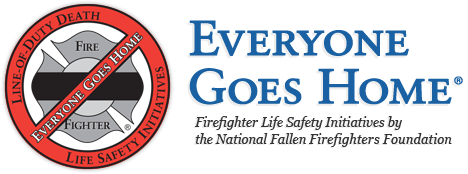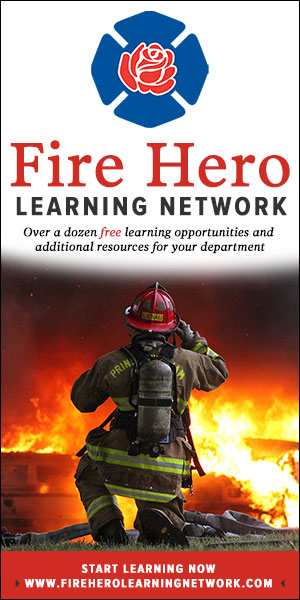By Paulette Oliver, J.D.
WHA Insurance
The National Fire Protection Association (NFPA) has been analyzing firefighter deaths and injuries on an annual basis for many years. The reports indicate more than 80,000 firefighters suffer injury in the performance of their duties each year. There was a 4 % reduction in injuries in 2007. The increased emphasis the fire organizations have given to safety along with the technological improvements over the recent years has shown a significant improvement in injury reduction since the 1980’s and 1990’s.
NFPA reports estimate there were 13,450 exposures to infectious diseases and 28,300 exposures to hazardous conditions such as chemicals and fumes. These categories of injuries represent more than half the injuries that occurred in 2007. Additional firefighter injuries and near misses also involve burns and struck by objects including vehicles. It appears that the proper use of personal protective equipment may have reduced a significant portion of these injuries.
The exposures created through the hazardous activities involved in firefighting create great risks to those involved. Regulatory agencies such as the Occupational Safety and Health Act (OSHA) and the NFPA have created rules and guidelines that address many of the hazards associated with firefighting. While all risks can’t be eliminated, our base of knowledge in the area of fire science based on these two agencies as well as accident investigations has equipped us with the ability to effectively reduce the hazards firefighters face. A crucial component of firefighter safety is Personal Protective Equipment (PPE), which creates a barrier between the firefighter and the hazardous condition.
One of the most frequent questions raised when leaders are recommending or dispensing workplace personal protective equipment is, “Do I have to wear this?” It is not sufficient to leave these types of questions unanswered. The “best” PPE offers no protection if it is not worn or worn inappropriately.
Whether the equipment is required by State or Federal Occupational Health and Safety regulation, or NFPA guidelines or voluntarily distributed to shield personnel from injury, one of the major obstacles for PPE use is staff compliance. From a safety perspective, most departments have developed and adopted Standard Operating Policies, Guidelines and Procedures for the activities their respective personnel are engaged in.
These SOPs, or SOGs are generally based upon OSHA regulations or NFPA guidelines. Well developed policies, procedures and guidelines serve as the cornerstones of most departments. However, failure to comply with the SOP’s or SOG’s can create very serious problems for agencies should something go wrong. It’s often better not to have policies than to disregard them. A key ingredient to ensure compliance is effective communication to the department’s personnel.
It is very important that personnel are familiarized with department policies, procedures and guidelines for performing task and the inclusion of the appropriate PPE. Those in supervisory positions are often “multi-tasked” to the point where they no longer take the time to keep an eye on staff. Training in the proper use of PPE and explanations about why it is necessary may also be neglected or spotty. This is not acceptable and creates a situation where inconsistencies can occur. Those in leadership must understand and be held accountable to ensure these reviews and audits occur on a frequent basis.
The selection of PPE should involve a team that reflects knowledge of the issues involved with the PPE such as regulatory requirements, purpose, hazards, environments as well as frequency and duration of use. An area that needs additional emphasis is including ergonomic considerations in areas where there is an impact on personnel. Once decisions are made to obtain new PPE or change existing PPE, there should be communication with personnel about the pending changes, including timing.
Leadership must acknowledge, identify and address issues relating to PPE. There are reasons why people resist PPE and practical ways to approach the problem. Once the type of PPE needed has been established, and the list has been narrowed to products with the documentation and proven reliability to do what’s been deemed necessary, compliance hurdles can be considered. There will always be employees who don’t wear their PPE, and there will always be PPE that is too hot, too stiff, too bulky and too heavy. The role of leadership when these situations arise is to become a problem solver.
If the PPE doesn’t fit, personnel just won’t wear it or it becomes ineffective. When it comes to PPE, fit means function. If staff is uncomfortable in their gear, they will either “forget” to put it on, wear it incorrectly, or be irritable and inefficient while wearing it. Personnel, who are able to try on various sizes and immediately compare fit and comfort, are more likely to end up with the correct size.
Other criticisms include: It’s so bulky (restrictive, hot, cold). The features that allow PPE to provide protection are often features that make it uncomfortable. Even if it fits correctly, it can be annoying to wear. The protective gear by its very nature is designed to keep certain substances out, often keeping the wearer’s body heat and moisture in.
When leadership is faced with these types of situations, a discussion must be held with affected personnel. If the “best” PPE for the task has been selected and it is part of the procedures, staff “must'” use it.
Leadership must address the issue of compliance as a matter of fact. Safety rules cannot be overemphasized. Leaders and trainers must clearly identify the PPE requirements for specified tasks and no exceptions allowed.
Proper training, demonstrations of equipment use, and information about wearing it correctly combined with a realistic understanding about attitudes toward equipment, can help defuse many objections. It is also critical that personnel know the limitations of the assigned PPE. Every product has design specifications that should be reviewed with staff during the implementation phase. Knowing what the PPE is designed to do and its limits will prevent misuse of PPE and help keep firefighters safe.
One thing we also know is that often circumstances are created where PPE not needed during certain activities. Equipment that is taken on and off by personnel when briefly passing through hazardous areas must be immediately and constantly available, because it is easier to go without it than go and get it. This leads to another compliance issue: consistent and unwavering enforcement of equipment use. Leaders should be conducting frequent audits of staff to ensure that PPE is being used appropriately and consistently. Leadership should provide immediate feedback to personnel regarding PPE usage to reinforce the behaviors expected. These audits can also be the basis of future trainings and employee “coaching” sessions.
It is important to let employees in on the PPE decisions. Leaders should consider offering each employee a choice between two or three styles of each item, especially one sized products. This will require only a minimum of extra paperwork and little or no additional storage space. Choices need not be as complicated as completely different products. Even different fabric or strap colors, or different storage cases, can make personnel more receptive to their equipment. Picking out their own PPE gives staff a personal investment in and a responsibility toward their equipment, if only because it is the item they chose for themselves.
Another objection to change is that personnel feels there is nothing wrong with their current PPE. People are resistant to change and like the familiar. Another consideration for resistance could be the appearance of the replacement PPE. Studies have shown that appearance is probably the main reason people pull off certain types of PPE, or resist wearing PPE. Leaders should remind staff that most personal protective equipment was not created with appearance in mind. However, the PPE world is changing to address the concerns of appearance as well as performance. Safety eyewear has made the most significant strides in appearance and performance.
It is very important leaders let personnel know you care about their safety: Connecting employee commendations and awards to PPE reinforces the idea that the equipment is part of a uniform, rather than an “extra” piece of clothing. Pins, stickers, embroidered patches, key rings and small tags are examples of items that can be purchased with simple, universal messages or custom made with a department logo and an appropriate safety phrases.
Handing out small items at yearly anniversaries or celebrations that can be pinned to, stuck on or wrapped around the recipient’s PPE creates a portable display of accomplishment, experience and seniority. PPE travelling from employee to employee does not lend itself to personal labeling, but stickers on a helmet, pins on the shoulder straps of a back support, patches on protective garments, a specially-printed retainer strap for safety glasses, and small tags on ear muffs are tangible means of linking the award with the significance of the PPE equipment. However, it is important only department sanctioned items and attachment procedures be used as part of this celebratory process. It is of the utmost importance that nothing interferes with the integrity of the PPE or reduces its effectiveness.
Methods for encouraging personnel to wear and properly maintain PPE are probably as varied as the staff themselves. Allowing wearers to make some of the decisions about their equipment, and assuring their gear is as comfortable, familiar, personal and habitual as other parts of clothing, is certainly preferable to demanding they wear equipment or face disciplinary action. Safety is a “selling” job that leadership must engage in continually. It is important that organizations continue to improve the culture of their organizations to include “safety’ as a core value.
Leadership has the responsibility to provide the “best” available PPE for the situations your firefighters face. Training is a critical element that must be conducted in a timely and effective manner to ensure that personnel understands the requirements for usage, maintenance and inspection of assigned PPE. Leaders must constantly encourage staff to use the PPE at all times and not permit deviations. These are important steps to secure the safety and health of your firefighters, your greatest asset.
Related:
» Everyone Goes Home® Resource Section


